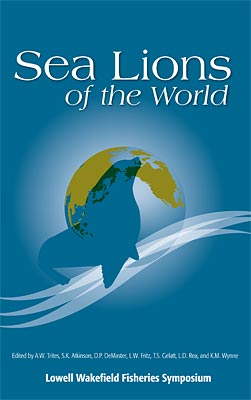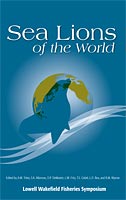
Avoidance of artificial stimuli by the Steller sea lion
K. Iida, T.-G. Park, T. Mukai, and S. Kotani
- Price: $1.60 Sale: $0.00
 This is part of Sea Lions of the World
This is part of Sea Lions of the World| Format | Price | |
|---|---|---|
| PDF download [461.1 KB] Bypass cart and download |
Free | Add to Cart |
Description
Every winter, hundreds of Steller sea lions (Eumetopias jubatus) visit the coast of Hokkaido, northern Japan. Their foraging behavior destroys fishing gear, which is a serious problem. In order to find a solution that allows the coexistence of both Steller sea lions and fishing activities, attempts have been made to control their behavior using acoustical and optical stimuli. This study examined methods of repelling Steller sea lions from fishery gear using aerial and underwater sounds and flashing lights. In this study, we (1) observed and analyzed the relationship between the calls and the behavior of Steller sea lions; (2) searched for effective stimuli for repelling Steller sea lions; (3) developed a displacing system that generates artificial stimuli to repel Steller sea lions using sounds and lights; and (4) tested the displacing system.
Experiments were conducted at a Steller sea lion haul-out located on the west coast of Hokkaido, on the Sea of Japan. Steller sea lions were exposed to acoustical and optical stimuli consisting of repeated intermittent sounds with or without flashing lights. This system was controlled from the edge of a cliff, and the reactions of Steller sea lions were monitored using a video camera and microphone.
Most of the Steller sea lions responded to the stimuli by vocalizing toward the source, while moving away and jumping in the water. The most effective stimuli for repelling Steller sea lions were aerial sounds, underwater sounds, and flashing lights in that order.
Item details
- Item number: AK-SG-06-01ag
- Year: 2006
- DOI: https://doi.org/10.4027/slw.2006.33



